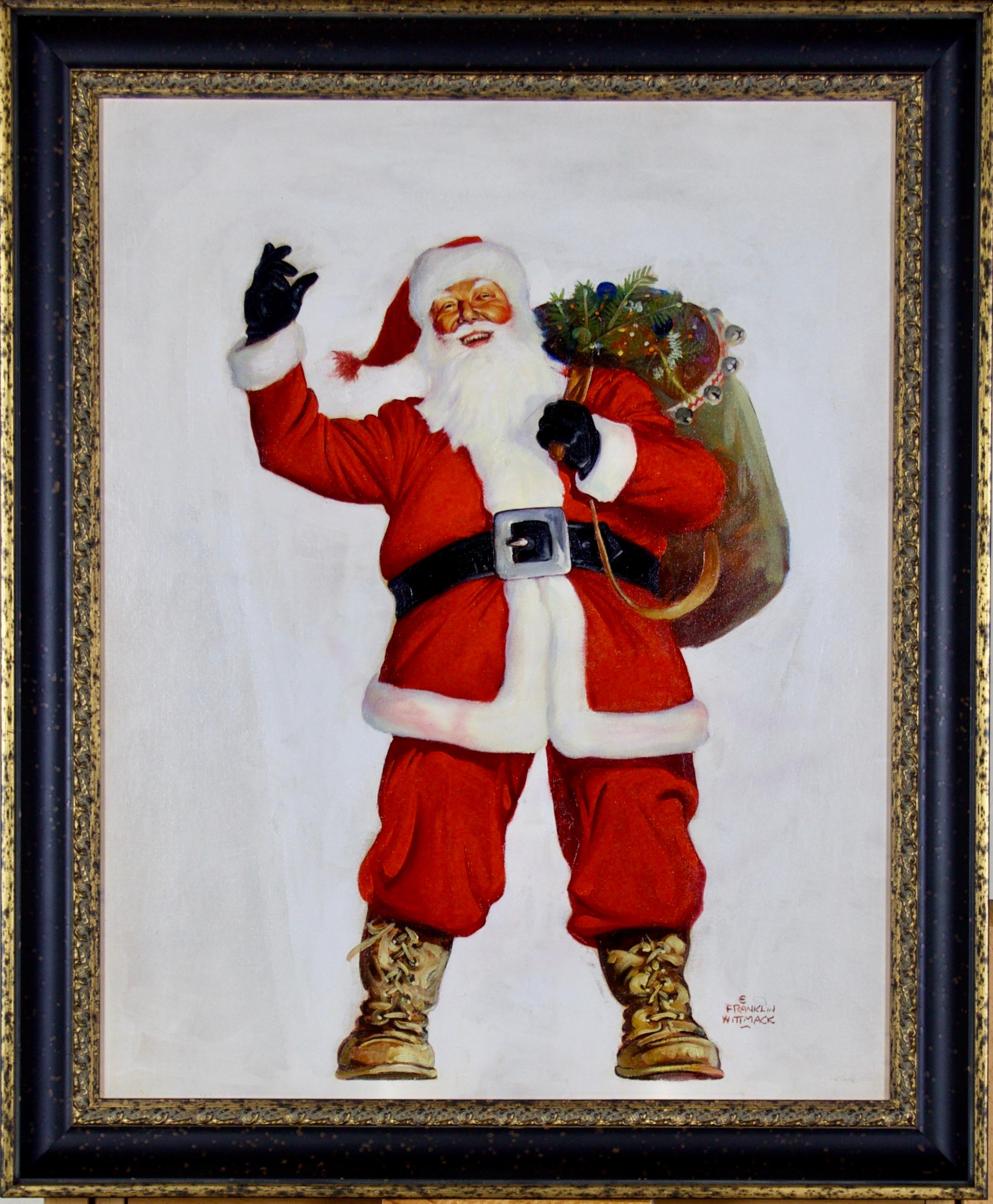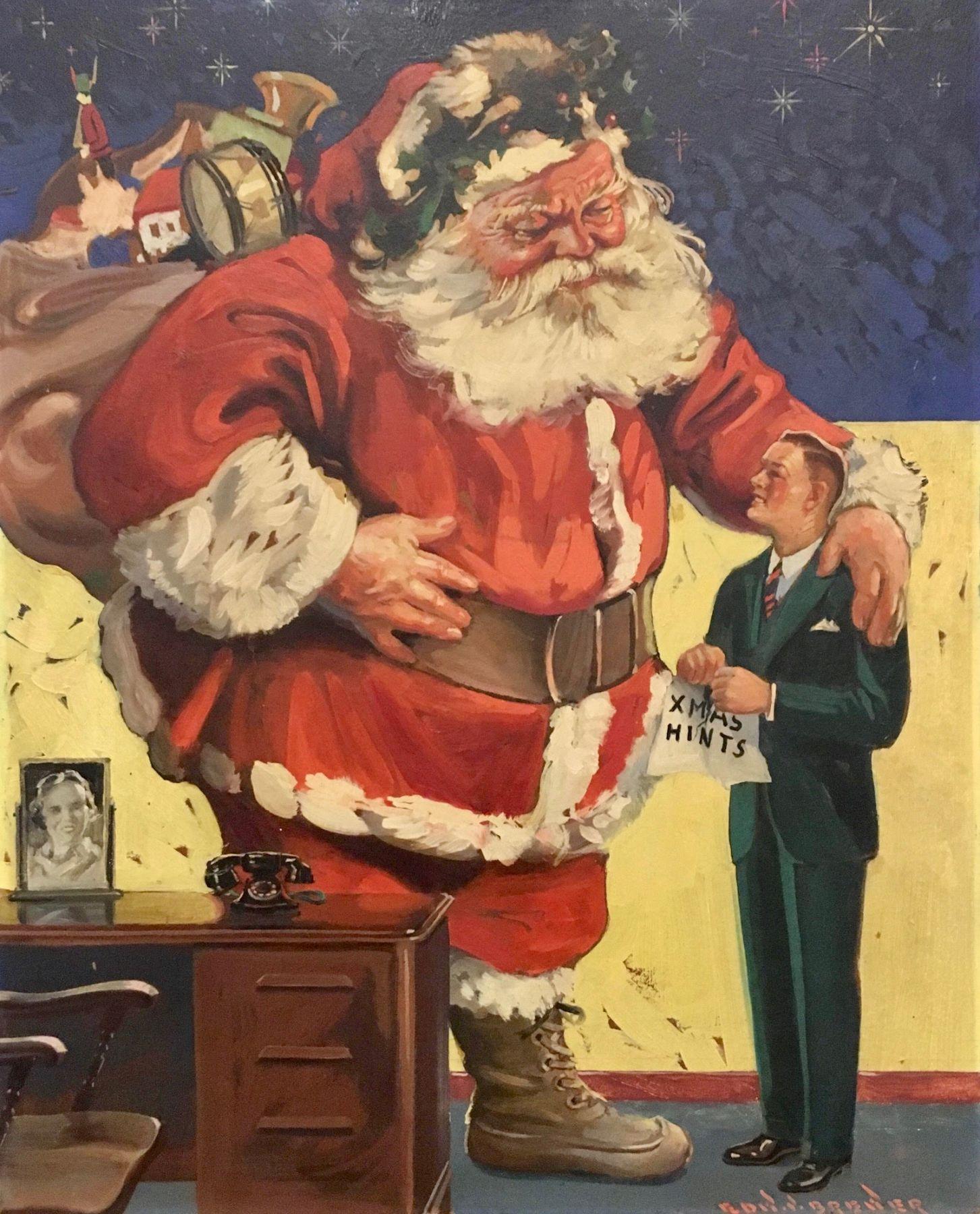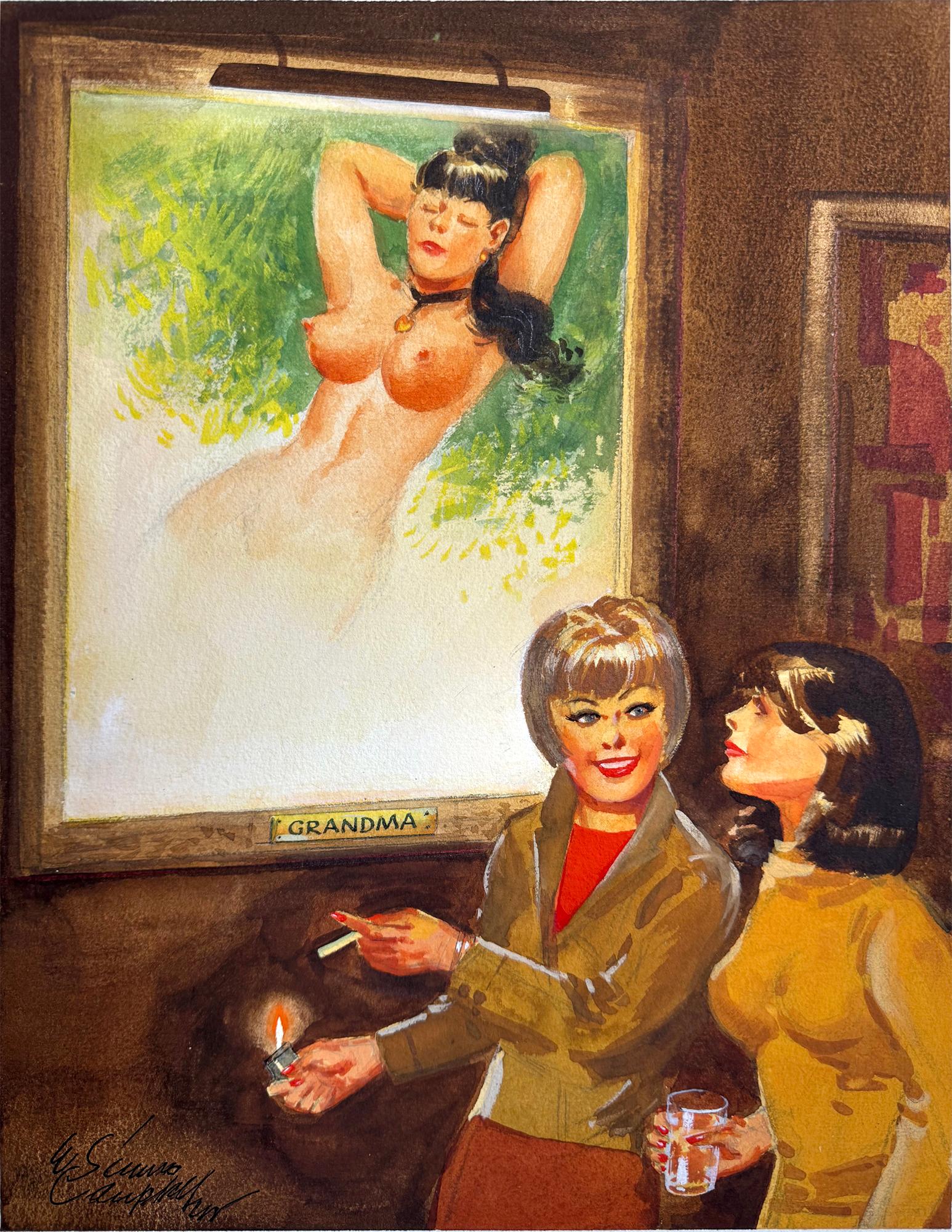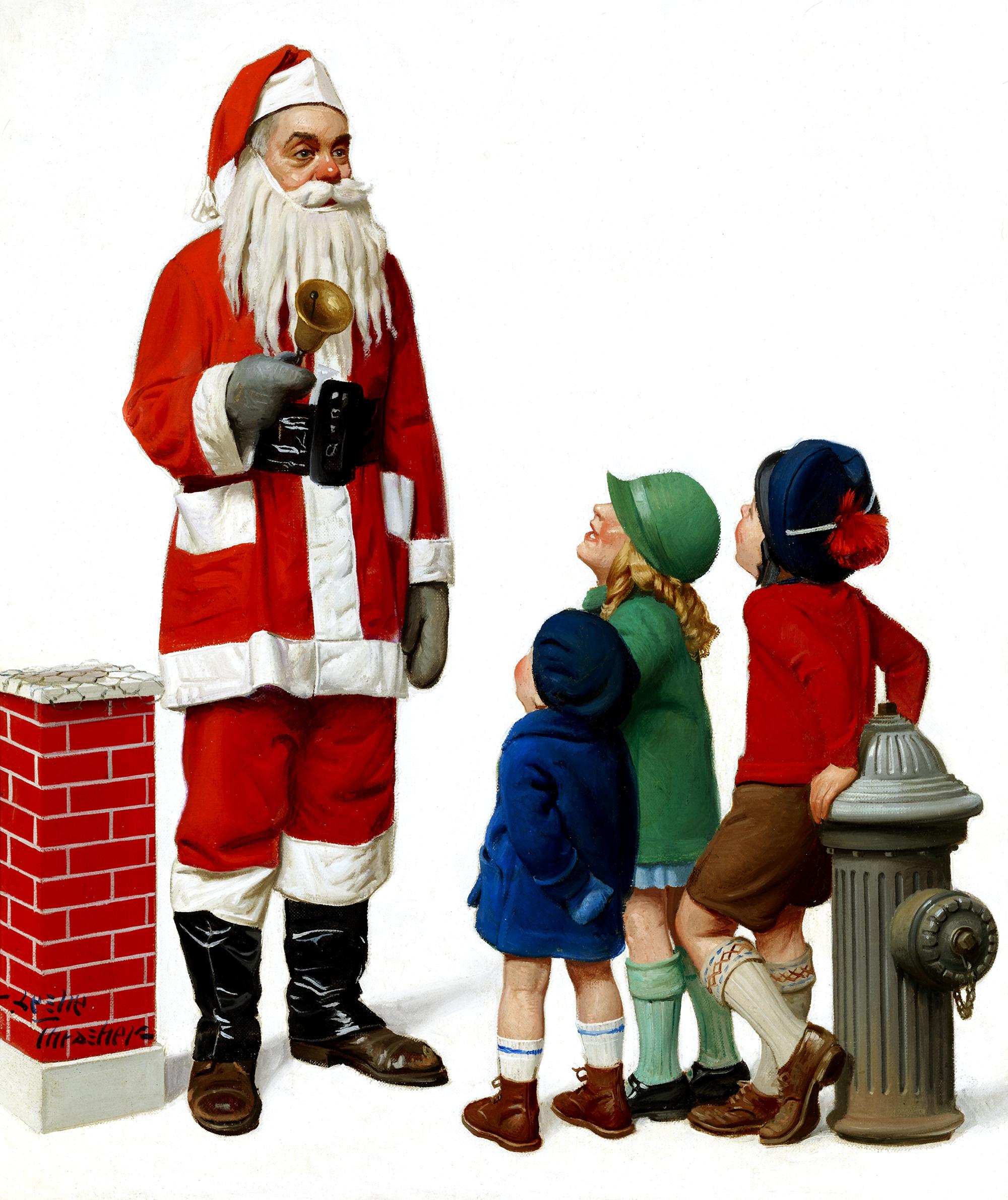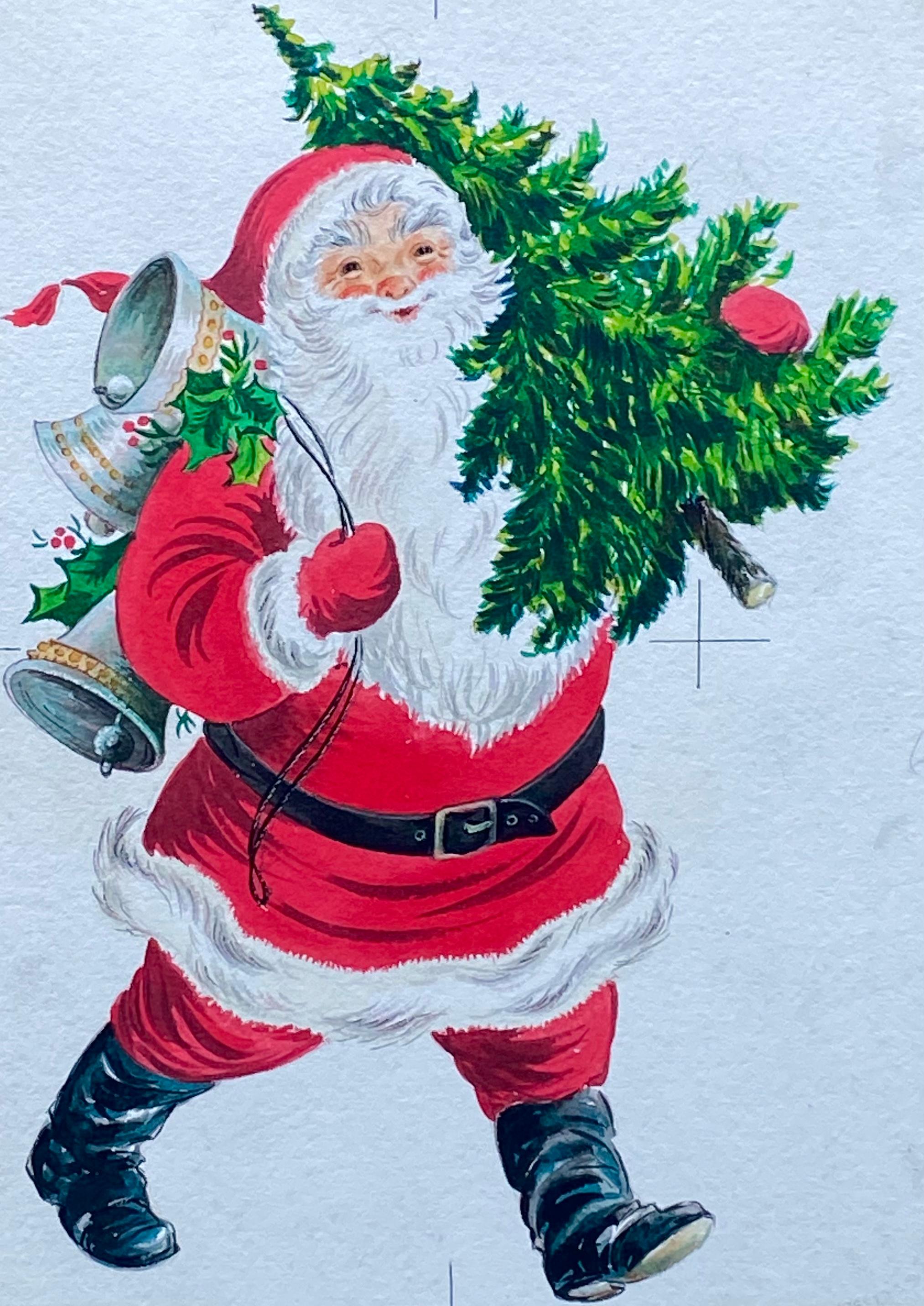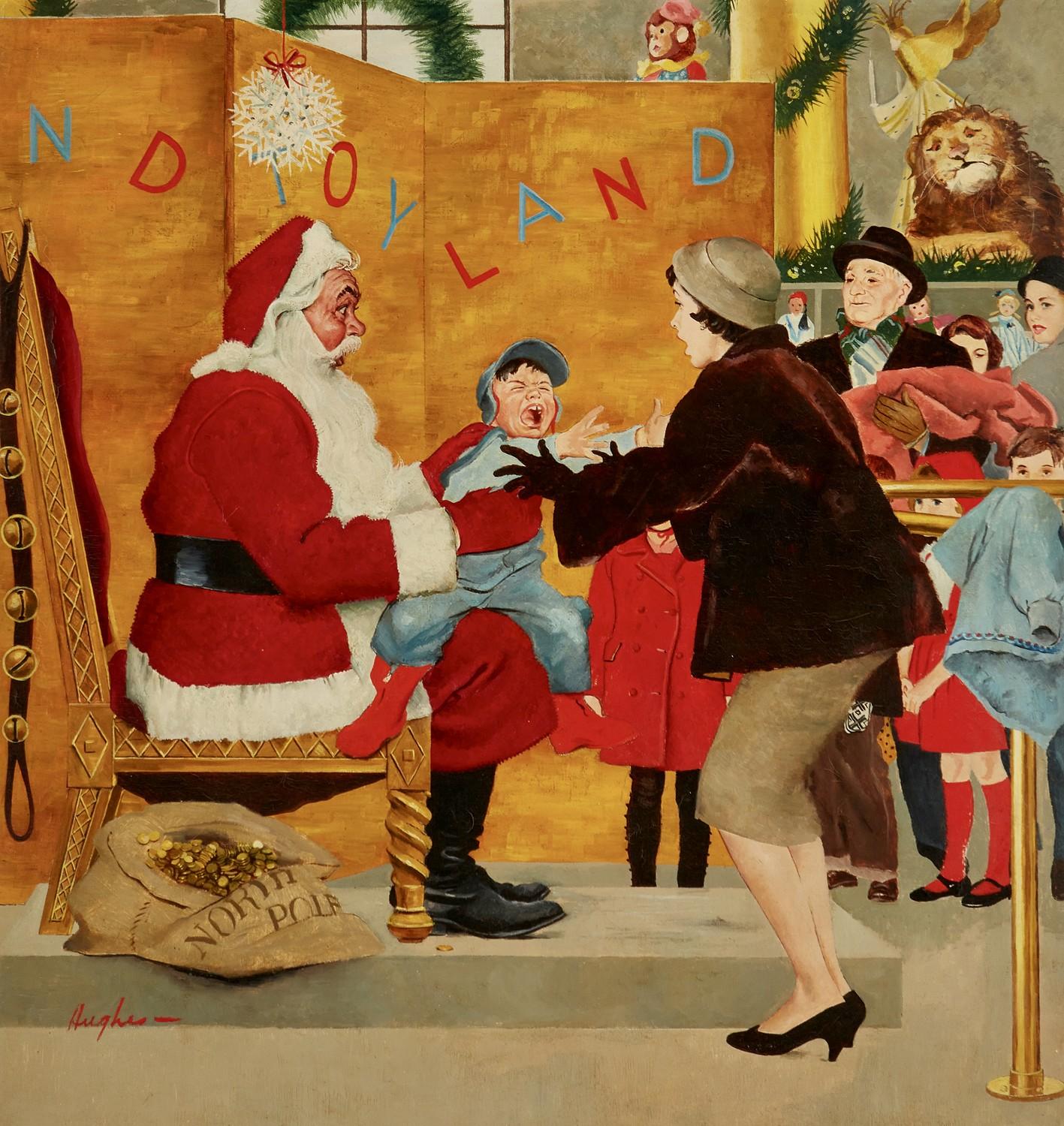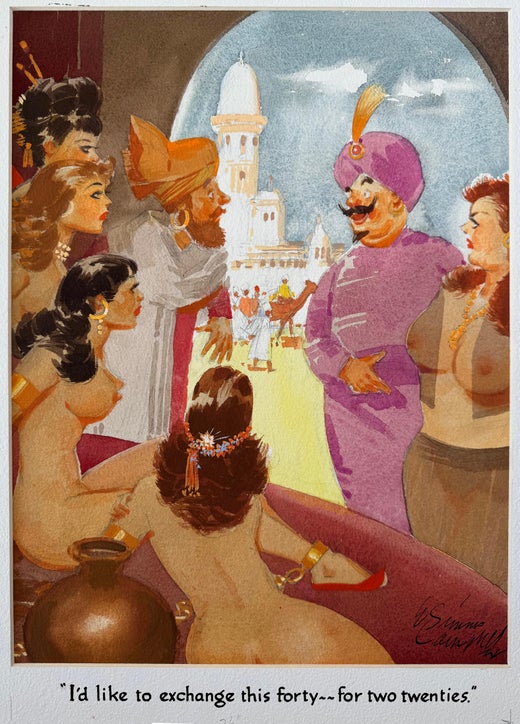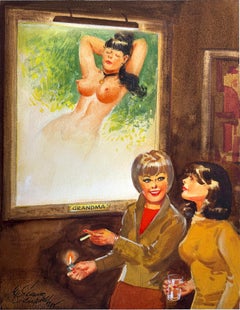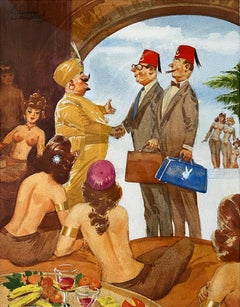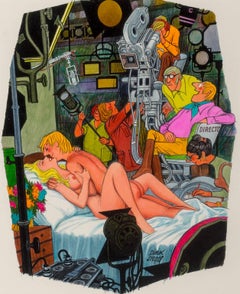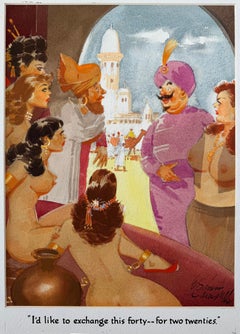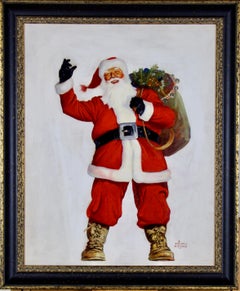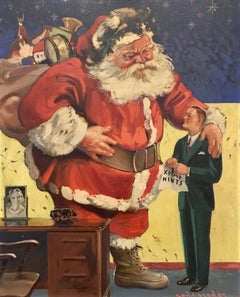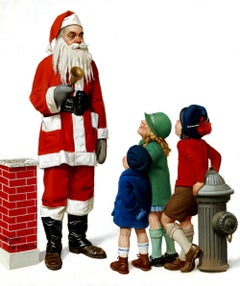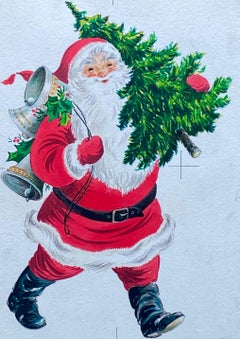Items Similar to Santa Claus Sexy Playboy Cartoon First African American Illustrator, Elmer Simms
Video Loading
Want more images or videos?
Request additional images or videos from the seller
1 of 15
E. Simms CampbellSanta Claus Sexy Playboy Cartoon First African American Illustrator, Elmer Simms1963
1963
$25,000
£19,384.26
€21,984.57
CA$35,836.43
A$38,972.93
CHF 20,531.81
MX$473,333.55
NOK 258,126.30
SEK 241,972.56
DKK 165,053.85
About the Item
Santa has a quickie with Mom.
Elmer Simms Campbell was the first African American Illustrator to work for major newsstand magazines.
Published December, 1963
Signed in pencil lower right
The uploaded video on 1stDibs is coming up a bit off color. Refer to the still images for more accurate color
E. Simms Campbel was the first major Black American Illustrator. He did covers for Esquire Magazine starting in the 1930s.
He created the famous bulging-eyed Esquire Mascot “Esky.”
He also worked for The Chicagoan, Cosmopolitan, Ebony, The New Yorker, Playboy, Opportunity: A Journal of Negro Life, Pictorial Review, and Redbook.
He was inducted into the Society of Illustrators' Hall of Fame in 2002.
His work demonstrates a deep and masterfully understanding of drawing figures and faces in an academic but stylized style.
- Creator:E. Simms Campbell (1906 - 1971, American)
- Creation Year:1963
- Dimensions:Height: 13.5 in (34.29 cm)Width: 10.5 in (26.67 cm)
- Medium:
- Movement & Style:
- Period:
- Condition:Conditioin is good, Colors are bright and do not show the effect of age. Board has a very slight bow to it. Board dimension 16.75 x 12.50 Conditioin is good, Colors are bright and do not show the effect of age. Board has a very slight bow to it.
- Gallery Location:Miami, FL
- Reference Number:1stDibs: LU385315448202
E. Simms Campbell
Elmer Simms Campbell (January 2, 1906 – January 27, 1971) was an American commercial artist best known as the cartoonist who signed his work, E. Simms Campbell. The first African-American cartoonist published in nationally distributed, slick magazines, he created Esky,the familiar pop-eyed mascot of Esquire. Campbell was born in St. Louis, Missouri, the son of educators, Elizabeth Simms Campbell & Elmer Campbell
He then enrolled in the University of Chicago. After one year, Campbell left the University of Chicago and transferred to and received his degree from the Chicago Art Institute.
He spent two years at Triad Studios before moving to New York City in 1929. taking classes at the National Academy of Design. During this time, he contributed to various magazines, notably Life, & Judge.
Following the suggestion of cartoonist Russell Patterson to focus on good girl art, Campbell created his "Harem Girls", a series of watercolor cartoons that attracted attention in the first issue of Esquire, debuting in 1933. Campbell's artwork was in almost every issue of Esquire from 1933 to 1958 & he was the creator of its continuing mascot, the cartoon character in a silk top hat.
He also contributed to The Chicagoan, Cosmopolitan, Ebony, The New Yorker, Playboy, Opportunity: A Journal of Negro Life, Pictorial Review, and Redbook.
His commercial artwork for advertising included illustrations for Barbasol, Springmaid,Hart Schaffner & Marx.
Campbell also was the author of a chapter on blues music in the 1939 book Jazzmen, a seminal study of jazz's history and development.
Campbell died in White Plains, New York, in 1971
His gag panel, Cuties, was syndicated by King Features in more than 145 newspapers "A Night-Club Map of 1930s Harlem"
Of enduring cultural & historical interest is the witty, cartoon-filled map Campbell drew in 1932 – "A Night-Club Map of 1930s Harlem" identifying the attractions of Harlem during the Harlem Renaissance and adding his personal notes. He captures the intensity of the scene: within a few blocks of each other he has cartooned Cab Calloway singing at the Cotton Club, Bill "Bojangles" Robinson doing his step dance at the Lafayette Theater – "Friday night is the Midnight show, Most Negro revues begin and end here." Lissome "cafe au lait girls" dance at Small's Paradise. Outside, doormen welcome White swells in top hats, while an elegant Black couple in evening dress dance "the Bump"
Campbell's map appears in the book version of Ken Burns's documentary Jazz. The map in its entirety also appears as the inside front cover of "Of Minnie the Moocher and Me", the autobiography of Cab Calloway by Cab Calloway and Bryant Rollins (TY Crowell, 1976). Jazz historian Mike Thibault reports that the original was displayed by the Smithsonian in 1996.The map is currently held at the Yale Beinecke Rare Book & Manuscript Library.
On April 4, 2017, National Geographic published an article on the map that included the map and several enlarged sections of it. They featured it again during 2020 to subscribers of their newsletter, among a collection of unique maps of New York City.
Recognition

About the Seller
5.0
Vetted Professional Seller
Every seller passes strict standards for authenticity and reliability
Established in 2005
1stDibs seller since 2016
117 sales on 1stDibs
Typical response time: 1 hour
- ShippingRetrieving quote...Shipping from: Miami, FL
- Return Policy
Authenticity Guarantee
In the unlikely event there’s an issue with an item’s authenticity, contact us within 1 year for a full refund. DetailsMoney-Back Guarantee
If your item is not as described, is damaged in transit, or does not arrive, contact us within 7 days for a full refund. Details24-Hour Cancellation
You have a 24-hour grace period in which to reconsider your purchase, with no questions asked.Vetted Professional Sellers
Our world-class sellers must adhere to strict standards for service and quality, maintaining the integrity of our listings.Price-Match Guarantee
If you find that a seller listed the same item for a lower price elsewhere, we’ll match it.Trusted Global Delivery
Our best-in-class carrier network provides specialized shipping options worldwide, including custom delivery.More From This Seller
View AllNude Playboy Cartoon, First African American Illustrator Elmer Simms Campbell
By E. Simms Campbell
Located in Miami, FL
E. Simms Campbell was the first and top black commercial artist in the USA for decades.
In "Grandma," we see a deeply conceptual work, with the blank canvas as the main point of the...
Category
1960s Impressionist Nude Paintings
Materials
Watercolor, Illustration Board, Pencil
Beautiful Maidens Nude Women Harem, Playboy Cartoon African American Illustrator
By E. Simms Campbell
Located in Miami, FL
E. Simms Campbel was the first major African American Illustrator. He did covers for Esquire Magazine starting in the 1930s.
He created the famous bulging-eyed Esquire Mascot “Esky.”
He also worked for The Chicagoan, Cosmopolitan, Ebony, The New Yorker, Playboy, Opportunity: A Journal of Negro Life, Pictorial Review, and Redbook.
This work, "What do you mean your wife doesn't understand you ---- I'm your wife!" is from Cuties Daily Comic Strip, June 18, 1950
He was inducted into the Society of Illustrators' Hall of Fame in 2002.
His work demonstrates a deep and masterfully understanding of drawing figures and faces in an academic but stylized style.
"My pleasure, boys. Always glad to see a delegation from the States." From the Playboy Collection...
Category
1960s Impressionist Nude Paintings
Materials
Watercolor, Pencil
Couple Having Sex: That's a Wrap, Playboy cartoon Illustration
By Dink Siegel
Located in Miami, FL
Dink Siegel is one of those rare conceptual Artists who are also called cartoonists, capable of clearly and effectively communicating a complex narrative in a single picture. Beside...
Category
1970s American Modern Figurative Drawings and Watercolors
Materials
Mixed Media
Harem: Sexy Nude Girl Illustration for Playboy. First Black Illustrator
By E. Simms Campbell
Located in Miami, FL
Playboy Magazine ran this joke cartoon illustration in color on page 43 for the October 1960 edition.
Signed lower right.
The work is executed on a heavy Whatman Illustration board....
Category
1960s American Modern Nude Drawings and Watercolors
Materials
Watercolor, Illustration Board, Pencil, Gouache
My Husbands Former Girl Friends - First Black Illustrator/ Black Cartoonist
By E. Simms Campbell
Located in Miami, FL
Cuties Cartoon Strip - E. Simms Campbell
My Husband Former Girl Friends - First Black Illustrator/ Cartoonist,
Category
1940s Contemporary Portrait Drawings and Watercolors
Materials
Ink, Board
Playboy cartoon Illustration, "For Posing, My Terms Are a Dollar an Hour, Room
By Richard Taylor
Located in Miami, FL
Put aside Richard Taylor's dry wit. Look at his masterfully rendered figures and brilliantly constructed compositions based on a two-point perspective. Clearly, he is an underrated and overlooked talent in the class of Charles Addams. Above all, Taylor, with his heavely-lidded-eyed figure, has a style of his own. An artist who has an instantly recognized style - unique to him/her is a rarity in today's artworld of derivative artists.
"For Posing, My Terms Are a Dollar an Hour, Room, and Board", Playboy cartoon illustration...
Category
1960s Contemporary Figurative Paintings
Materials
Watercolor
You May Also Like
Santa
By Edgar Franklin Wittmack
Located in Fort Washington, PA
Signed Lower Right
Category
20th Century Paintings
Materials
Oil
$13,500
Santa Claus, Likely Advertisement for Coolerator Refrigerators
By Edward Vincent Brewer
Located in Fort Washington, PA
Medium: Oil Painting
Signature: Signed Lower Right
The back says Coolerator Times, likely a advertisement for Coolerator refrigerators
Category
20th Century Figurative Paintings
Materials
Oil
Santa
By Leslie Thrasher
Located in New Orleans, LA
A Salvation Army Santa looks on with a mixture of fatigue and disinterest as a group of children tell him their Christmas gift wish lists in this lighthearted composition by leading American illustrator Leslie Thrasher. This painting was created for the December 20, 1930 issue of Liberty Magazine, for which the artist illustrated covers on a weekly basis for six consecutive years. Thrasher is known for his scenes of everyday American life imbued with a sense of humor, qualities represented to great effect in this charming painting.
Born in 1889 in Piedmont, West Virginia, Thrasher studied at the Pennsylvania Academy of Fine Arts as a teenager and received a scholarship to study art abroad in Paris. Upon his return, he began studying under Howard Pyle, known as the “father of American illustration.” Thrasher sold his first cover illustration to the Saturday Evening Post in 1912, four years before Norman Rockwell’s first Post cover, and he would go on to produce over 360 magazine covers throughout his career. He painted humorous, relatable scenes of everyday life in America with colorful characters set against white backgrounds. He was also a successful commercial artist, painting advertisements for Cream of Wheat, Chesterfield Cigarettes...
Category
Early 20th Century Other Art Style Figurative Paintings
Materials
Canvas, Oil
“Santa Claus”
Located in Southampton, NY
Original artwork composed of watercolor and gouache on archival paper for use as a Christmas card. Unsigned. Circa 1965. Condition is good. Newly professionally matted. Not fram...
Category
1960s Other Art Style Figurative Drawings and Watercolors
Materials
Watercolor, Gouache, Archival Paper
$225 Sale Price
25% Off
Crying on Santa's Lap, Original Christmas cover for The Saturday Evening Post
By George Hughes
Located in Fort Washington, PA
Original Christmas holiday cover for The Saturday Evening Post, published December 6, 1958
We’re thrilled to announce the acquisition of an original 1958 Christmas cover for The Sat...
Category
1950s Figurative Paintings
Materials
Canvas, Oil
Santa Claus Amoco Advertisement
By Harry Fredman
Located in Fort Washington, PA
Date: 1960
Medium: Gouache and Tempera on Board
Dimensions: 11.25" x 24.25"
Signature: Signed Lower Left
"I switched too..." Amoco
Category
1960s Portrait Paintings
Materials
Tempera, Gouache, Board
More Ways To Browse
Vintage Cartoon Art
Sexy Art
Playboy Art
Cartoon Illustration
Retro Playboy Art
Playboy 1960
Santa Claus Vintage Art
1960 Vintage Santa Claus
Venus Adonis
Vintage Bullfighter Painting
Yossi Stern
African Scene Painting
Alessandro Casetti
Andrea Del Sarto
Auction Oil Paintings
Bailey Oil Paintings
Blacksmith Painting
Boots Painting
